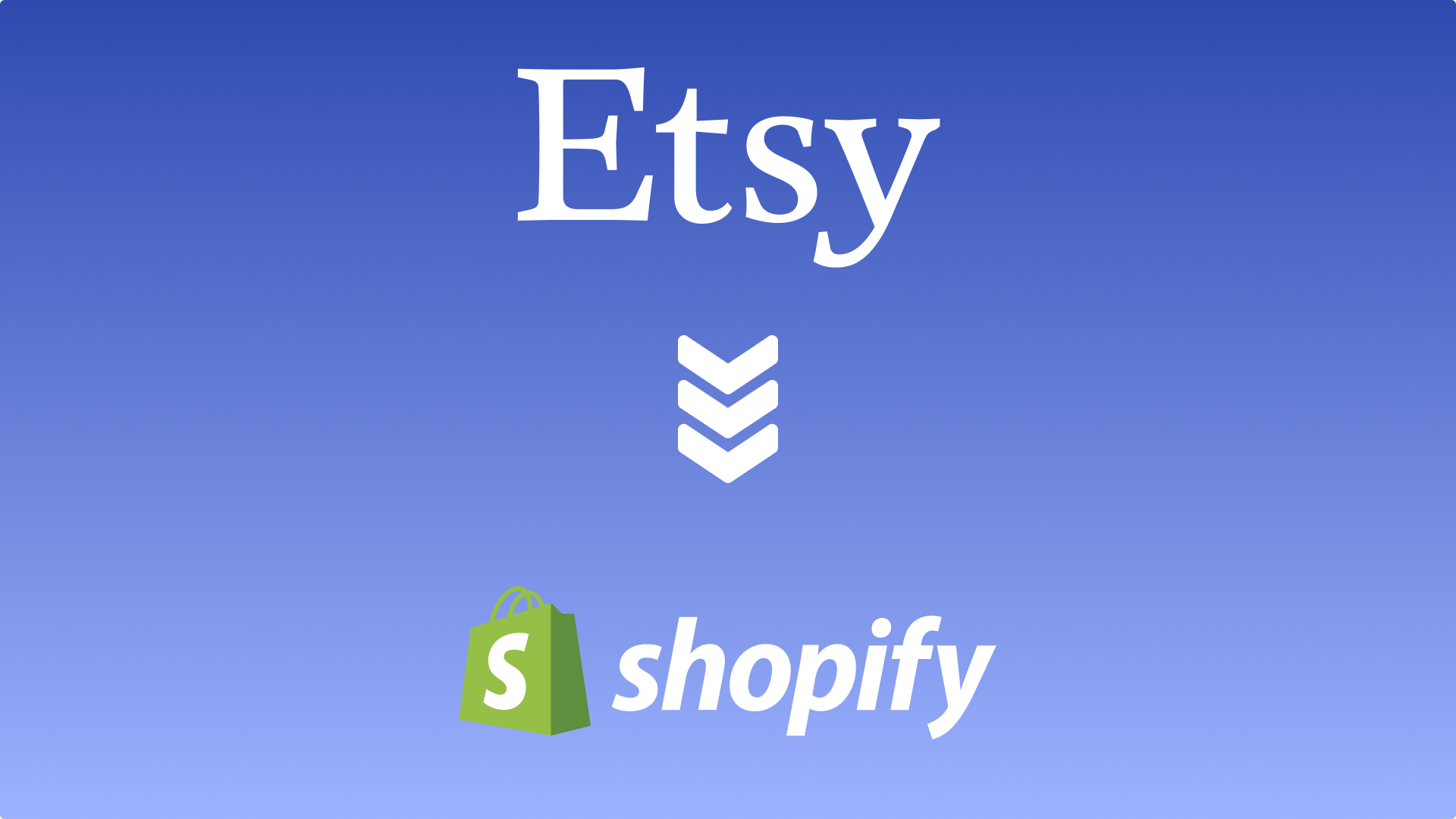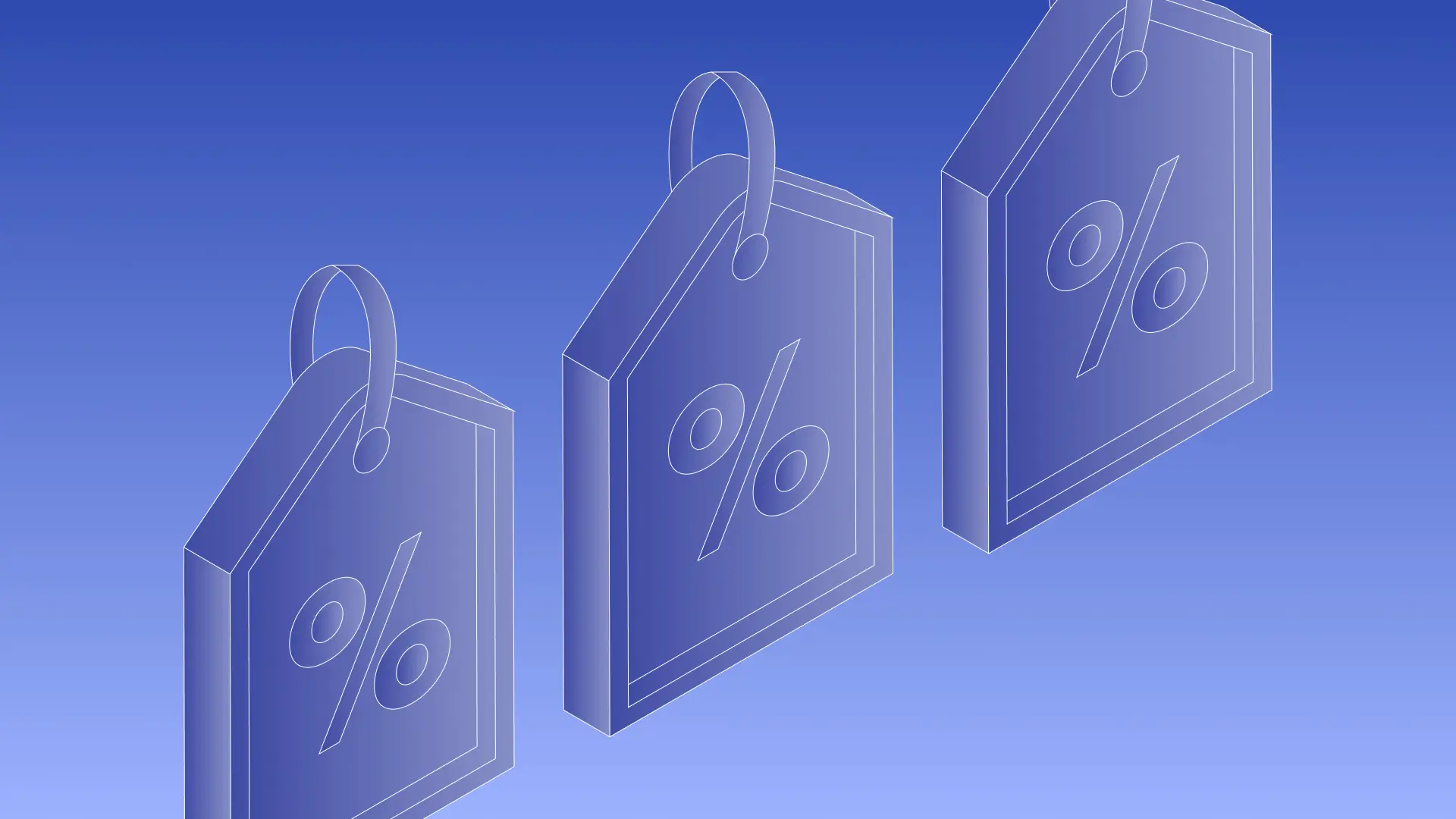How to Migrate from Etsy to Shopify: a Step-by-Step Guide
- Shopify
- Etsy
Launched
October, 2024

Introduction
If you are thinking about moving your online store from Etsy to Shopify, you’re not alone. With over 700 million users and accommodating the top 27% of e-commerce businesses (with the closest competitor being WooCommerce at 23%), Shopify is an excellent choice for businesses of all sizes.
Transitioning from Etsy to Shopify may seem daunting, but it doesn’t have to be. Here’s a step-by-step guide going through the entire migration process.
Step 1: Prepare Your Etsy Store for the Move
Before you start the migration, it’s time to get your affairs in order. This will streamline the process and make sure you do not transfer any unnecessary baggage that will just complicate the migration. Things like cleaning up your listings, removing any outdated products, and getting rid of anything you don’t want to transfer over to Shopify can make the process simpler.
It’s also a good idea to back up your data once you have cleaned everything out, regardless of the migration process you’d like to go with. Etsy offers the option to download a CSV file (Comma Separated Values) that contains all your product information, including your titles, descriptions, prices, and images.
Here are some initial preparation steps you may want to take before you start your Shopify migration:
- Take new images for your products
- Polish up your copy
- Remove outdated products
- Optimise pricing
- Update policies
- Dial in on your brand vision
Step 2: Set Up Your Shopify Store
Now that you’ve prepared your Etsy store, it’s time to set up Shopify. Sign up for an account and select the tier that suits your business. After this, you’ll be able to pick a theme - choose something that fits your brand and vision. Don’t worry if it’s not perfect; you can always tweak things later on.
Setting up your payment gateways and shipping options is the next course of action. Shopify works with a plethora of different payment options, so just choose what you like. In general, the more options you give customers, the better.
Similarly, make sure your shipping rates and options are set up to match or improve upon what you offered on Etsy.
It’s not recommended to install a bunch of plugins at this point, especially if you aren’t familiar with Shopify. However, if you want to install a simple shipping addon, like Wizship or EasyShip, feel free to do so.
Step 3: Import Your Etsy Listings to Shopify
Now comes the bulk of the operation; moving your products over to Shopify. Fortunately, this doesn’t have to be done manually. Apps like Easy Import allow you to transfer everything over with just a few clicks, making a once-difficult process painless.
If you want to migrate over manually, you can use the CSV file from earlier. Shopify allows you to import CSV files directly into your store, meaning setting everything up won’t take long. Once uploaded, you’ll be able to review and edit the products as needed - this is recommended to ensure there were no issues during the migration process.
Step 4: Customise and Optimise Your Shopify Store
Once your products are uploaded, it’s time to make your store stand out. This is where Shopify really shines in comparison to Etsy; you can customise everything, from the layout to the checkout process.
Take some time to properly acquaint yourself with Shopify’s theme editor to personalise your store’s look and feel. Make sure the design matches your brand's feel and identity, but prioritise the user experience. Having a jaw-dropping website is great, but if there is too much going on or you have too many aspects that impact performance, it's going to negatively affect your store.
You’ll also need to optimise your store for SEO (Search Engine Optimisation). Etsy has its own built-in algorithm and has quite a low ceiling for SEO, whereas Shopify is the exact opposite. With Shopify, you're competing with everyone, not just other Shopify users. The flip side is that there is a ton of room for optimisation.
Improving Shopify SEO is a whole other subject in of itself, but just make sure you include keywords (the key terms your target audience is searching for) in your product titles, descriptions, and alt-text. You can also include keywords in meta titles and descriptions if you are looking to optimise even further.
Here are a few ways you can optimise your store for SEO:
- Choose relevant keywords and include them in titles, descriptions, alt-text, meta titles, and meta descriptions
- Prioritise user experience and performance
- Start a blog and regularly produce content
- Create an active social media network
- Take advantage of SEO tools and apps
- Optimise store navigation and have clear categories
Just make sure that, similarly to design, you keep the user experience in mind when optimising for SEO. Don’t just stuff a bunch of keywords all over your store hoping to get to the top of the page on Google. This will have the exact opposite effect - Google actively penalises websites that spam keywords and offer poor user experiences.
Step 5: Redirect Traffic from Etsy to Shopify
The final step is to redirect your traffic from Etsy over to Shopify. This is one of the more tricky aspects of the process, and in general, you likely will experience a drop in sales and traffic when you first move over. However, there are things you can do to mitigate this.
Etsy doesn’t allow you to directly redirect traffic to your new Shopify store, but you can update your announcement section with a message directing customers over. You can also include a Shopify link in product descriptions and make use of any other communication avenues you may have, such as an email list.
There’s also social media. Apart from being a great source of sales in of itself (Ruler Analytics cites social media as having a 2.9% conversion rate on average), social media can be a great way of letting your loyal customers know that you’ve made the switch.
Final Thoughts
Migrating from Etsy to Shopify doesn’t have to be a headache. In fact, with the many tools and apps available, it's easier than ever. By following the steps outlined in this guide, you’ll be able to smoothly transition your products, set up your store, and redirect your loyal customers over to your new platform.
Whether you choose to run both stores at the same time or completely switch over, you’ll soon be able to enjoy the freedom that comes with being completely in control of your online business.
Frequently Asked Questions (FAQs)
Can I import Etsy Reviews to Shopify?
Yes, you can import Etsy reviews to Shopify. There are many apps that can transfer reviews for you, or you can do it manually as CSV.
Does Shopify Have Fees like Etsy?
Shopify does have transaction fees that you pay as a percentage every sale similar to Etsy, but it doesn’t have a listing fee. However, Shopify does require a subscription, unlike Etsy’s standard tier.
Should I Migrate my Website to Shopify?
Most businesses will benefit from migrating to Shopify providing they make enough sales to cover the expenses. Extremely small businesses that do not want to scale may be better off with an alternative like Etsy.
Let's build something together
If you like what you saw, let's jump on a quick call and discuss your project

Related posts
Check out some similar posts.

- Shopify
Navigate Shopify's pricing with ease. Discover what each plan offers and choose the best option to g...
Read more
- Shopify
Increase Shopify revenue by raising Average Order Value: five practical tactics that encourage highe...
Read more
- Shopify
Prepare your Shopify store for the holidays with proven tactics to attract shoppers, improve UX, and...
Read more
- Shopify
Drive e-commerce growth through standout customer experiences: strategies to build loyalty, lower CA...
Read more